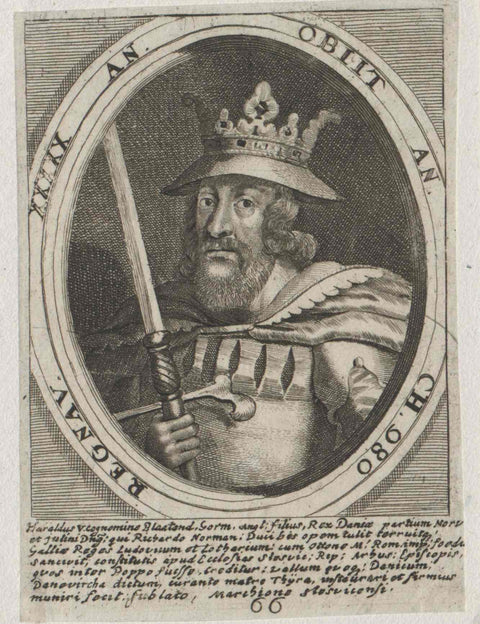
This Viking King’s Name Lives On In Bluetooth Technology. His Burial Site Is A Mystery.
Being an inspiration for wireless technology isn’t the kind of heroic achievement that most Viking rulers could claim credit for in their ancient sagas. Yet, centuries after his death, King Harald “Bluetooth” Gormsson has conquered the world—not through military conquest, but through Bluetooth technology named in his honor.
Who Was Bluetooth?
Bluetooth, who lived circa 910—987 AD, is believed to have earned his dental epithet from having a dead tooth which was likely bluish or gray in color. As it was Viking custom to give people bynames sometimes based on physical appearances, the name stuck.
Bluetooth united the kingdoms of Norway and Denmark in 958. He was proud enough of this achievement to mention it on a large rune stone, known today as one of the Jelling stones, which stands as both a memorial to his parents and a monument to his own legacy.
Yet Bluetooth was destined for further fame still. IT developers chose his unusual moniker to represent their trademark for technology enabling the short-range wireless connection of electronic devices.
Although his name is literally present everywhere around the globe today, the man himself – or what remains of him – is missing. Where is King Harald buried, and why is it such a mystery?
The Lost Tomb of Bluetooth
The final resting place of Harald Bluetooth has eluded researchers for many years and has given rise to much debate, in part due to the Vikings' propensity for travel.
After uniting Scandinavian territories and introducing Christianity to his realm, Bluetooth came to an ignominious end after he was overthrown by his son, Sweyn Forkbeard. German medieval chronicler Adam of Bremen alleged that Bluetooth was wounded in his final battle against his son and died in 986 after retreating to a location believed to be in present-day Poland.
Some contemporary sources allege that Bluetooth died in a Viking fortress called Jomsborg on the Baltic Sea, but no researchers have been able to firmly pinpoint where Jomsborg was located or whether the place even existed.
While Forkbeard went on to embroil himself in further conflicts and became the first Danish king of England, his ill-fated father fell into obscurity. Adam of Bremen asserts that Bluetooth’s loyal troops transported his body back to Denmark and buried him in Roskilde, where he had built a church and a settlement. While a majority of Danish kings are indeed buried in Roskilde, no one has proven conclusively that Bluetooth’s grave is located there.
Pagan or Christian Burial?
Complicating matters further, the manner of Bluetooth’s burial is also disputed. Although born a pagan, Bluetooth eventually embraced Christianity. Opinions differ on whether Bluetooth would have been buried according to Viking traditions – in a burial mound and surrounded by his possessions – or in a Christian manner, such as in a church vault or churchyard.
Swedish archaeologist Sven Rosborn, former director of the Malmo City Museum, believes that Bluetooth is buried in Wiejkowo, Poland. In view of the king’s Christianity, Rosborn surmises that he would have been interred in a churchyard.
In spring 2022, Polish researcher Marek Kryda claimed to have discovered the possible location of Harald’s tomb in Wiejkowo using LIDAR (light detection and radar technology). His theory is that Bluetooth is buried in a pagan-style mound beneath a 19th century Catholic church.
Still An Unsolved Mystery
Despite the recent buzz in news headlines about Wiejkowo, it is one of many theories about Bluetooth’s final resting place that remains unproven, according to Peter Pentz, Viking expert and curator at the National Museum of Denmark.
Pentz described Kryda’s theory as “difficult to assess,” noting that there is no evidence as yet to suggest that the mound in Wiejkowo “is a burial mound and, if so, whether it could contain a buried Viking and in this case, King Harald.”
Given the king’s conversion to Christianity—which historical evidence shows had a profound influence on his reign— Pentz is inclined to believe that Bluetooth’s burial was conducted in a Christian manner rather than in accord with Viking traditions.
“Personally, I would probably expect that, in light of the significant Christian marking of the Jelling Stone’s inscription, he was given a Christian burial in a church—perhaps in Roskilde, Zealand, as one of the written sources claims,” said Pentz, adding that it is only a theory. “There are many possibilities.” ****
